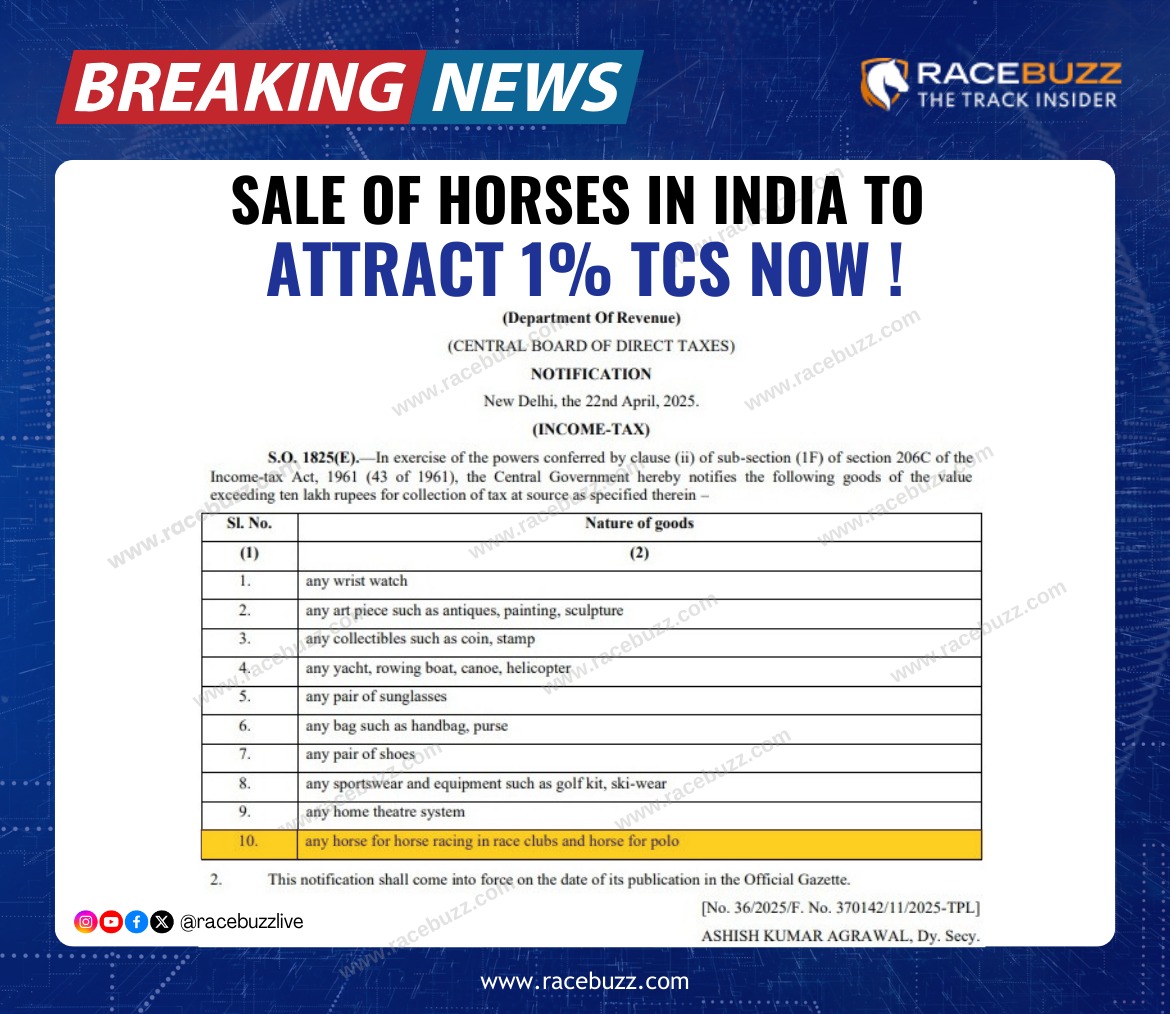Already reeling under the weight of a steep 28% GST on betting, India’s horse racing ecosystem has now been hit with another financial setback. A fresh 1% Tax Collected at Source (TCS) has been imposed on the sale of horses used for racing or polo, applicable on transactions exceeding ₹10 lakh.
Announced via the Income Tax Department’s official Twitter handle, the new rule is part of Notification S.O. 1825(E), issued by the Central Board of Direct Taxes (CBDT) on April 22, 2025, and published in The Gazette of India. The notification, which comes into effect from the date of issuance, has been introduced under section 206C (1F) of the Income-tax Act, 1961. It brings horses into the same bracket as luxury items such as art, yachts, helicopters, high-end fashion accessories, and sports gear—all now subject to 1% TCS if priced above the specified threshold.
The impact on the racing and breeding community is expected to be significant, as most quality racehorses are valued well above ₹10 lakh. Breeders, owners, and turf club stakeholders warn that the move could disincentivize investment, further destabilizing a sport that has already been in decline due to excessive taxation and lack of policy support.
India’s horse racing industry which supports thousands of livelihoods, from ground staff, trainers, and jockeys to grooms and veterinarians has long sought urgent relief from the GST burden. This additional TCS levy, introduced without industry consultation, is being viewed as yet another obstacle to growth, potentially discouraging new owners and shrinking the domestic auction market.
As calls grow louder for a comprehensive reassessment of tax policies affecting Indian horse racing, stakeholders are urging the government to recognize the historical, economic, and sporting significance of the industry before it’s too late.








